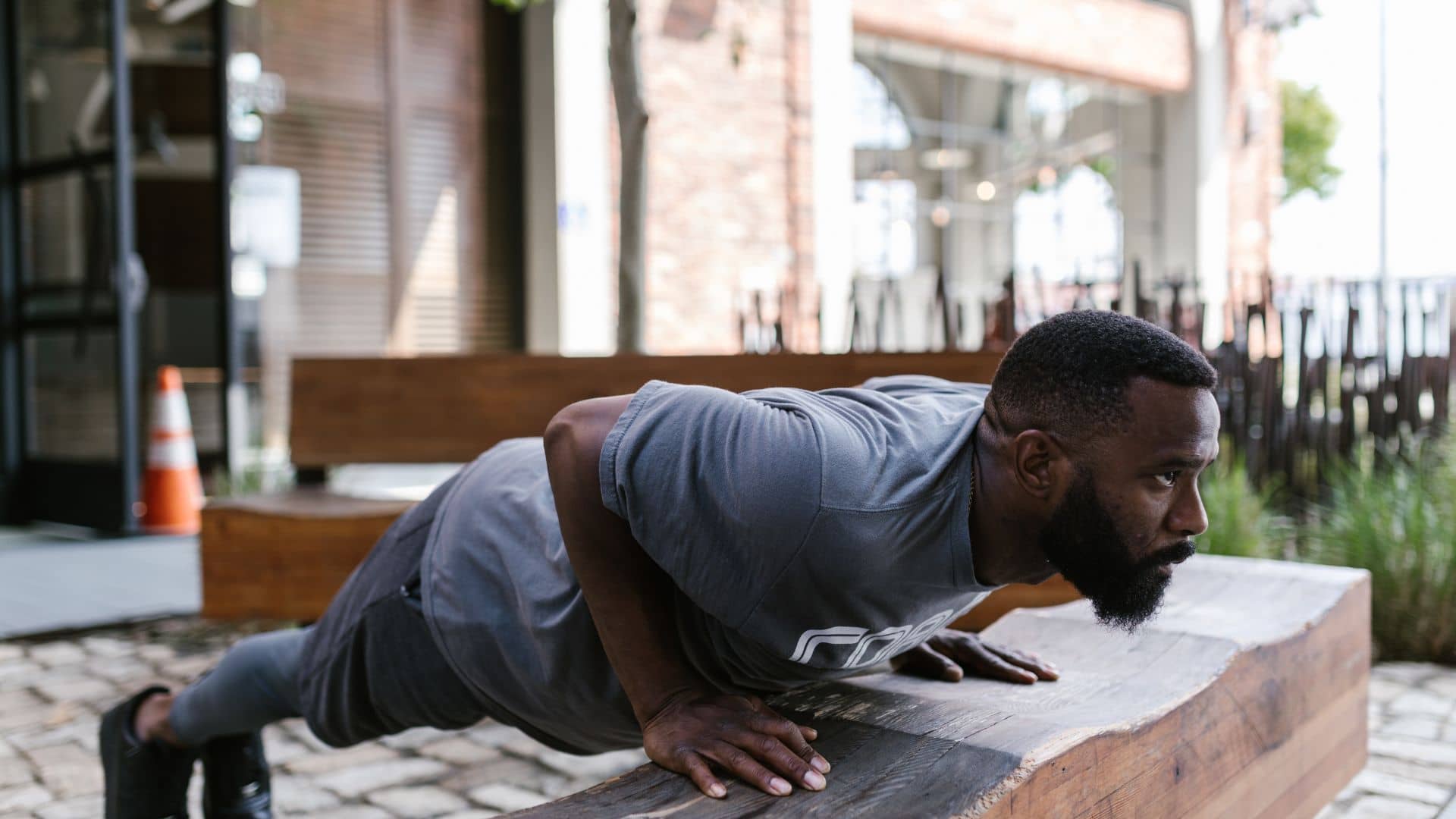Push-ups are a popular and effective exercise for building upper body strength, but sometimes individuals may experience weakness specifically in their adductor digiti minimi brevis muscle during this exercise.
This phenomenon can be puzzling and concerning for those who encounter it. In this comprehensive article, we will delve into the reasons behind this weakness and provide practical solutions to overcome it.
Push-ups primarily target the chest, shoulders, and triceps, but sensations or discomfort in the adductor digiti minimi brevis may occur due to overall stress during the exercise. Weakness can be due to overuse, muscle imbalances, or individual body mechanics. Consultation with a healthcare professional or fitness trainer is recommended for evaluation and personalized guidance.
Overuse or Fatigue.
When you perform push-ups with incorrect form or if you’re new to the exercise, your body may not efficiently distribute the workload among the muscles involved.
As a result, certain muscles may become fatigued more quickly than others. When fatigue sets in, your body instinctively tries to recruit other muscles to help with the movement and alleviate some of the strain on the fatigued muscles.
In the case of the adductor digiti minimi brevis, which is a small muscle in the foot, it’s not directly involved in the push-up motion.
However, if other muscles involved in stabilizing your body during push-ups, such as the core, shoulders, or glutes, become fatigued, your body may attempt to compensate by engaging additional muscles to maintain stability.
For example,
if your core muscles are not adequately strong or if they tire quickly, your body may recruit the adductor digiti minimi brevis and other nearby muscles to provide stability during the push-up.
This additional demand placed on the adductor digiti minimi brevis, which is not accustomed to handling such stress, can result in sensations of weakness or discomfort in that area.
It’s important to note that compensatory recruitment of muscles can vary from person to person based on individual biomechanics and muscle imbalances.
Therefore, it’s crucial to focus on proper form and gradually build up your strength and endurance in the muscles specifically targeted by the push-up exercise, as well as other supporting muscles, to minimize the likelihood of discomfort or weakness in unexpected areas.
Muscle Imbalances.
Muscle imbalances refer to the uneven strength or development between different muscle groups.
In the case of the adductor digiti minimi brevis, if it is weaker compared to the surrounding muscles, it may struggle to handle the stress placed on it during activities that indirectly engage those muscles, such as push-ups.
For instance, during a push-up, various muscles are involved in stabilizing your body, including the muscles in your core, chest, shoulders, and arms.
If the adductor muscles, including the adductor digiti minimi brevis, are weaker in comparison to these other muscles, they may not provide sufficient support or stabilization during the exercise.
As a result, they can experience strain or weakness as they struggle to keep up with the demands of the movement.
This muscle imbalance can arise from a variety of factors, such as a sedentary lifestyle, poor exercise selection, or a lack of targeted training for the adductor muscles.
Over time, if the muscle imbalance is not addressed, it can lead to compensatory patterns and potential overuse injuries in weaker muscles, including the adductor digiti minimi brevis.
To address muscle imbalances, it is important to incorporate exercises that specifically target and strengthen the weaker muscle groups.
In the case of the adductor muscles, exercises like standing hip adductions, side lunges, or clamshells can be beneficial.
Working with a qualified fitness professional can help you identify and address any muscle imbalances you may have, creating a well-rounded training program that promotes balanced strength and reduces the likelihood of discomfort or weakness in specific muscles during exercises like push-ups.

Individual Anatomy.
Every individual has a unique body structure and anatomy, including variations in muscle insertion points, joint alignment, and overall body mechanics.
These differences can affect how stress is distributed during exercises like push-ups and may result in additional strain or discomfort in specific areas, such as the adductor digiti minimi brevis.
For example, if your individual body mechanics or alignment predispose you to place more stress on the adductor digiti minimi brevis during push-ups, it may experience a greater workload compared to others.
This can happen due to variations in muscle lengths, joint angles, or even the way your body naturally stabilizes itself during the exercise.
As a result, you may feel weakness or discomfort in that specific muscle due to the increased demand placed on it.
Additionally, certain anatomical variations, such as differences in foot structure or arch height, can influence the mechanics of your lower body during push-ups.
These variations can alter the distribution of forces and potentially place additional stress on the adductor digiti minimi brevis or other muscles in the foot.
It’s worth noting that individual anatomy alone might not explain the sensations you’re experiencing in the adductor digiti minimi brevis.
Other factors, such as overuse, muscle imbalances, or technique issues, should also be considered.
If you consistently experience discomfort or weakness in a specific muscle during push-ups or any other exercise, consulting with a healthcare professional or a qualified fitness trainer can help assess your individual anatomy and provide appropriate guidance and modifications to accommodate your unique needs.
Here’s a tabular breakdown of the factors to consider when examining sensations of weakness or discomfort in the adductor digiti minimi brevis during push-ups:
| Factor | Explanation |
|---|---|
| How | How you perform push-ups, including your form, technique, and body alignment. |
| Why | Possible reasons for the discomfort, such as overuse or fatigue, muscle imbalances, or individual anatomy. |
| Where | The specific muscle affected, in this case, the adductor digiti minimi brevis. |
| When | The timing of the discomfort or weakness during or after performing push-ups. |
| What | The specific sensations or symptoms you’re experiencing, such as weakness, strain, or discomfort. |
Considering these factors can help identify potential causes and guide appropriate steps for addressing the issue. It’s important to consult with a healthcare professional or a qualified fitness trainer for a thorough assessment and personalized guidance based on your unique circumstances.
Conclusion.
In conclusion, feeling weakness or discomfort in your adductor digiti minimi brevis during push-ups can have several possible explanations. It could be due to overuse or fatigue, where your body compensates by engaging other muscles to complete the movement, indirectly affecting the adductor digiti minimi brevis.
Muscle imbalances, with the adductor muscles being weaker compared to other surrounding muscles, can also lead to strain or weakness during activities like push-ups.
Lastly, individual anatomy and body mechanics can play a role, as each person’s body is unique, and the distribution of stress during exercises can vary, potentially causing additional strain on the adductor digiti minimi brevis.
It’s important to consult with a healthcare professional or a qualified fitness trainer if you consistently experience discomfort or weakness in this muscle, as they can provide guidance tailored to your specific needs and help address any underlying issues.


